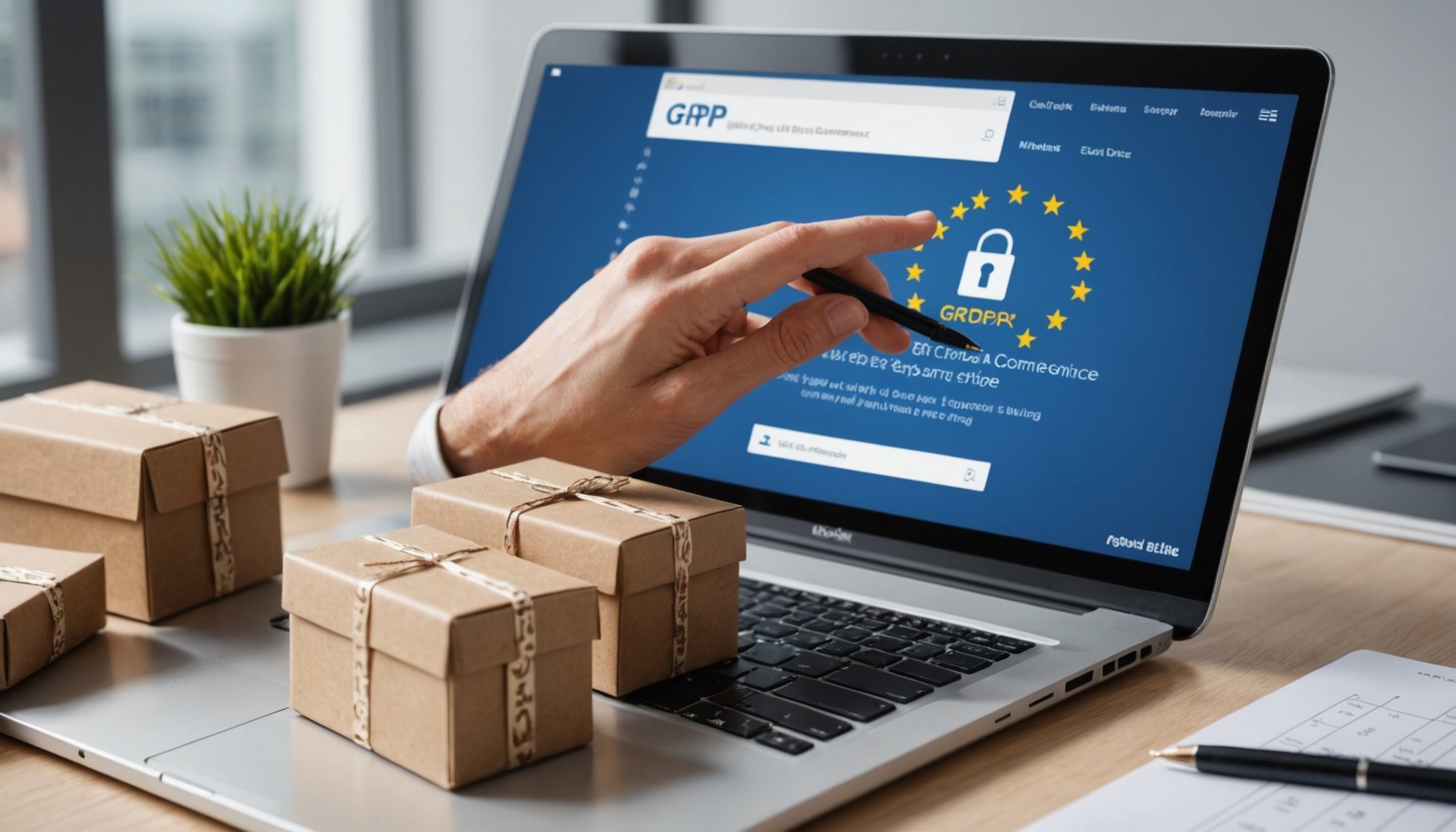Understanding GDPR and Its Importance for UK E-commerce
Navigating the complexities of GDPR compliance is essential for UK e-commerce businesses. The General Data Protection Regulation (GDPR) is a stringent legal framework that governs data protection and privacy in the European Union. For UK e-commerce, adhering to these data protection regulations is not just a legal requirement, but also crucial for maintaining customer trust and safeguarding brand reputation.
The GDPR has several implications for e-commerce operations. Businesses must ensure transparent data handling processes, obtaining explicit consent from users before collecting or processing their personal information. Non-compliance leads to hefty fines and damages reputation, emphasizing the importance of staying compliant.
Have you seen this : Transforming digital lending: innovative approaches for uk libraries to launch and elevate their services
At the heart of GDPR are key principles that directly affect e-commerce practices. These include data minimization, ensuring that businesses collect only the data necessary for their operations, and data accuracy, which mandates the upkeep of accurate and current information. Moreover, the principle of consent is vital, requiring clear and simple language when obtaining user permission.
Failing to align with these regulations not only poses legal risks but also impacts customer loyalty. Customers are more likely to engage with businesses that prioritize their data privacy, making GDPR compliance an integral part of a successful UK e-commerce strategy.
Also read : Mastering local seo: essential techniques for uk small businesses to achieve community success
Steps for Achieving GDPR Compliance
Navigating GDPR compliance becomes smoother by tailoring a roadmap specifically for e-commerce. This journey begins with crafting a unique compliance strategy, utilizing a detailed GDPR checklist. Each step ensures your business aligns efficiently with regulations.
A critical initial task involves conducting an in-depth data audit. This process answers key questions, such as: What data are we collecting? Answer: You should collect only essential data necessary for your operations. Justify each data point with a specific business need to maintain transparency and trustworthiness with customers. This audit evaluates not just the type of data collected but also scrutinizes its management and storage practices. Proper handling mitigates risks and enhances compliance.
Subsequent steps include implementing comprehensive policies and procedures. Introduce data protection impact assessments and establish clear processes for handling data breaches. To ensure a robust compliance framework, incorporate regular training for your employees. They should be well-versed in procedures to follow when dealing with personal data, thus reinforcing your defence against potential non-compliance.
In closing, remember that GDPR compliance is not static— it’s a dynamic process requiring ongoing attention and adaptation to regulatory updates and business shifts. By following these focused e-commerce strategies, maintaining compliance becomes a manageable commitment rather than an overwhelming challenge.
User Consent and Data Protection Rights
Understanding the significance of explicit consent in data collection is crucial for both users and companies. Explicit consent ensures that consumers are fully informed about how their data will be used. This not only builds trust but also aligns with legal requirements. Without clear consent, data handling can violate regulations, posing risks to organizations.
There are several effective mechanisms for obtaining and managing user consent. These include clear consent forms and opt-in checkboxes before data collection. Moreover, consent management platforms (CMP) play a vital role in streamlining these processes, making it easier for users to understand and control their preferences. Companies benefit by ensuring compliance with evolving privacy laws.
Under GDPR, users have enhanced data rights that protect their personal information. Key rights include:
- Access: Users can request and obtain details on the data collected about them.
- Rectification: Users can have any inaccurate data corrected swiftly.
- Erasure: Often referred to as the ‘right to be forgotten,’ allowing users to request the deletion of personal data.
These rights empower users, giving them greater control over their personal information while ensuring consumer protection at all times. Companies must prioritize these measures to maintain transparency and uphold trust with their customers.
Common Pitfalls in GDPR Compliance
Navigating the complexities of GDPR compliance presents numerous challenges, especially for e-commerce businesses. To achieve successful compliance, one must first recognize common mistakes often made in this arena. A crucial oversight involves the mismanagement of customer data, where businesses fail to obtain explicit consent or provide adequate data protection measures.
Risk mitigation strategies are vital in addressing these challenges. Firstly, implementing robust data management systems can prevent unauthorized access and improve data security. Ensuring regular audits of data handling practices also identifies potential weaknesses, enabling timely corrective actions. Another essential strategy is training employees about GDPR requirements, ensuring compliance is maintained at all levels.
Learning from past compliance failures is invaluable. One notable case involved a well-known online retailer being fined heavily for failing to protect customer data. Their lesson: ensuring transparent data processing practices and better security measures could have mitigated such risks.
By focusing on these pitfalls and employing effective strategies, e-commerce businesses can substantially reduce their compliance risks. Understanding these common mistakes affords valuable insights, guiding businesses toward more secure and lawful data management practices. This proactive approach not only averts financial penalties but also builds consumer trust and confidence.
Tools and Resources for Improving Compliance
When navigating the complex landscape of GDPR compliance, choosing the right tools and resources is crucial. There’s a variety of compliance tools and software specifically designed to help manage your e-commerce privacy regulations effectively.
For businesses, employing software such as OneTrust or TrustArc can streamline the process through centralized dashboards, customizable templates, and automated reporting. These tools often come with integrated features that track data flow, ensure consent management, and provide robust privacy impact assessments.
In addition to software, leveraging third-party resources like legal advisors and compliance experts can be invaluable. These professionals offer tailored guidance on regulatory requirements and help reduce potential legal risks. Their expertise ensures that your practices align with e-commerce best practices, which is critical for maintaining consumer trust.
Templates and checklists are also powerful resources for ensuring consistency and efficiency. They deliver a structured approach, helping you address every aspect of compliance, from data protection policies to customer consent forms. This consistency not only streamlines the compliance process but also provides an added layer of accountability for your business. Utilizing these resources effectively can position your company as a responsible and trusted player in the e-commerce arena, driving sustained success.
Real-World Case Studies and Best Practices
Embarking on the journey of compliance can be daunting for many e-commerce businesses, but numerous UK-based companies have successfully paved the way by adopting robust compliance strategies. Let’s delve into some noteworthy compliance case studies to uncover these strategies’ tangible benefits.
E-commerce examples in the UK illustrate businesses navigating the General Data Protection Regulation (GDPR) efficiently while optimizing their operations. For instance, a leading online fashion retailer implemented a transparent data collection process, which resulted in increased consumer trust and a 15% boost in sales within a year. Another company in the electronics sector utilized data minimization, collecting only essential customer details, thereby enhancing its data security measure and reducing the data breach risks.
Successful strategies from GDPR leaders reveal actionable best practices:
- Prioritizing data subject rights through clear communication channels.
- Developing efficient user consent mechanisms.
- Regularly updating policies to adapt to regulatory changes.
These approaches have not only ensured compliance but also fostered customer loyalty and operational excellence. By analyzing these outcomes, other e-commerce firms can replicate such strategies to protect sensitive data comprehensively and maintain a competitive edge in the industry.











